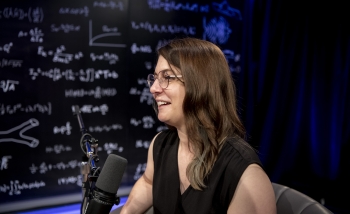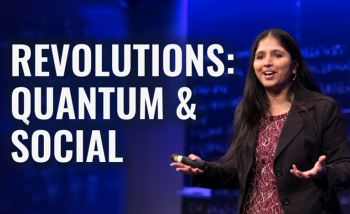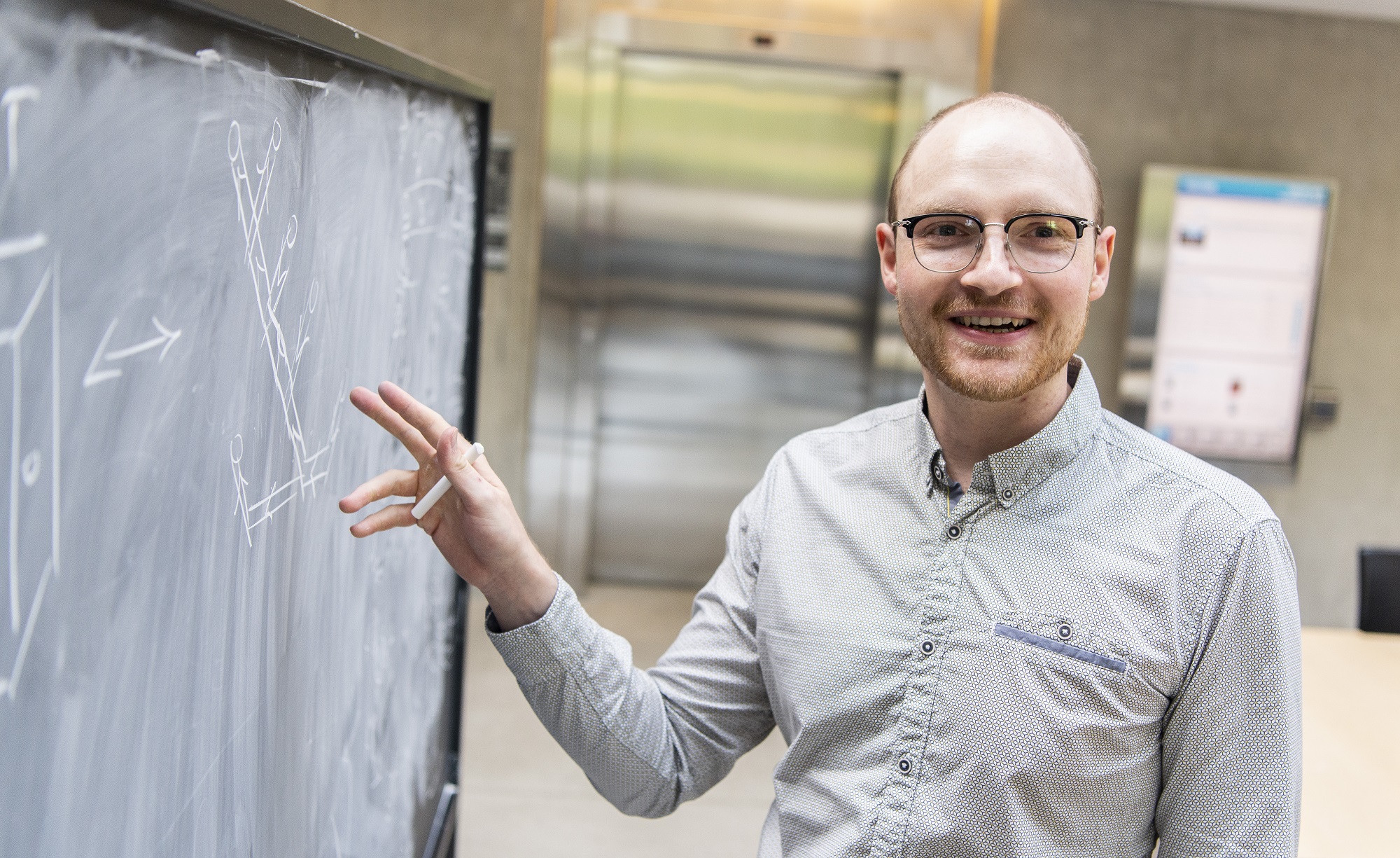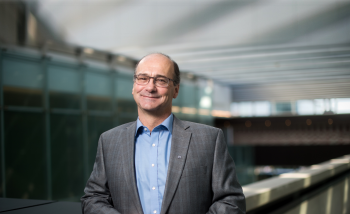Like all good treasure hunters, quantum gravity researcher Sebastian Steinhaus knows that clues often appear in unexpected places. That’s why the Perimeter postdoctoral fellow, who studies loop quantum gravity, has been working to open his research field — and science in general.
After all, fresh eyes can unlock new discoveries: if you have a greater diversity of people and approaches, there is more likelihood of generating the wealth of ideas needed for breakthroughs.
Now, as the winner of a prestigious €1 million research grant from the German Research Foundation’s Emmy Noether Programme, Steinhaus aims to both push his research into new areas and to expand its reach by building bridges to other specialties.
Steinhaus, who specializes in a form of loop quantum gravity called “spin foam models,” will start his own junior research group at the Institute for Theoretical Physics at the University of Jena in 2020.
“I want to describe physics at the smallest scales with these spin foam models, and then make connections to the large scales that we see today,” he says.
“Spin foam models, you can imagine like having building blocks of geometry. The question is, what happens when you put many of those building blocks together. How do they behave collectively?”
There are a couple of barriers to finding out. First, spin foam models are just too much for today’s supercomputers. Second, these models have an inherent limitation: they describe the geometry of spacetime, but none of the stuff in it.
“Somehow we have to include matter in all these questions,” Steinhaus says with a wry smile. “We obviously have matter in our universe. How do we make sense of that?”
THE PERIMETER POSTDOC EXPERIENCE
Perhaps the greatest quest in modern physics is to unite its two greatest pillars: general relativity and quantum theory. Loop quantum gravity is one approach to solving this challenge.
Steinhaus began working in the field as a PhD student at Potsdam, Germany, under the supervision of researcher Bianca Dittrich. When Dittrich joined the Perimeter faculty in 2012, Steinhaus came as well to complete his PhD.
After heading back to Germany for a postdoc in Hamburg, he returned to Perimeter in 2017 as a postdoctoral fellow and a member of Perimeter’s From Discretuum to Continuum research initiative.
“PI is really the place where you want to try new things. You have the resources available to work on what you’re interested in, what you want to push for, what you want to explore,” he says.
“PI is still very unique. It’s really a great opportunity in terms of the resources that you have available and the opportunities that you have here.”
Steinhaus’s work centres on numerics: creating and analyzing mathematical tools in order to answer (or get more accurate approximations for) big, complex problems that involve continuous variables or discrete sets of values.
A key aspect to his efforts is renormalization, which is essentially a way to zoom out from the very small to the very large. Renormalization is used in quantum gravity, quantum field theory, particle physics, quantum electrodynamics, and more.
Steinhaus chose to set up his group in Jena specifically because it is not focused on loop quantum gravity. He wants to bump up against new ideas, new people. His grant includes funding for a workshop, and Steinhaus hopes that bringing together people who use renormalization in different scenarios can help identify and unlock fertile pathways of exploration.
“What can I learn from them about renormalization in my theory, and vice versa?” he says. “Can we answer similar questions in different ways? If yes, why is that, if they start from very different assumptions? If not, what is the difference and what does that tell us?”
Finding those different voices and perspectives doesn’t happen easily on its own. That’s why Steinhaus thinks it’s important to be deliberate about seeking diversity.
While at Perimeter, Steinhaus joined the Institute’s Inclusive Platform, which aims to encourage and support more diversity in physics. Diversity is also driving his efforts to introduce numerics to more quantum gravity researchers both within his research group and beyond.
“It’s very challenging to actually change things but I think it’s important,” he says. “If you have more eyes and more perspectives, it’s certainly better.”
Further exploration
About PI
Perimeter Institute is the world’s largest research hub devoted to theoretical physics. The independent Institute was founded in 1999 to foster breakthroughs in the fundamental understanding of our universe, from the smallest particles to the entire cosmos. Research at Perimeter is motivated by the understanding that fundamental science advances human knowledge and catalyzes innovation, and that today’s theoretical physics is tomorrow’s technology. Located in the Region of Waterloo, the not-for-profit Institute is a unique public-private endeavour, including the Governments of Ontario and Canada, that enables cutting-edge research, trains the next generation of scientific pioneers, and shares the power of physics through award-winning educational outreach and public engagement.
You might be interested in




